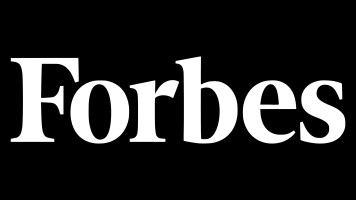Elsa Ramo on ‘The Boy and The Heron’ Wins At Oscars — Signaling New Era Of Animation

‘The Boy and The Heron’ Wins At Oscars — Signaling New Era Of Animation:
The 96th Academy Awards indicate that animation isn’t merely a genre, but rather an ever-expanding medium. This year’s animated feature Oscar nominees and the winner tell us a new story in animation; one that marks a departure from the traditional and perhaps more homogenized batch of animated features to a more exciting time.
The Oscars are one of the biggest nights in film. From the star-studded red carpet to Oppenheimer’s award sweep and Ryan Gosling’s infectious “Kenergy,” last night’s show was no different. It included many highlights while celebrating this season’s cinema gems and the upward trajectory of the industry after the recent strikes.
But perhaps one of the most standout moments came during the animation category when longtime Japanese filmmaker, Hayao Miyazaki’s The Boy and The Heron was named Best Animated Feature.
While fellow nominees like Sony Pictures Animation’s Spider-Man: Across the Spider-Verse were projected to take home the win, Miyazaki’s film – this being his final project from his beloved Studio Ghibli – received the award. The Boy and The Heron is also the first PG-13 animated feature with this honor, as most of the Academy’s choices have been for family and children-age audiences.
After a lifetime of bringing animated stories like My Neighbor Totoro, Howl’s Moving Castle and countless others, Studio Ghibli could not be more deserving of the award. While Miyazaki wasn’t present to claim the Oscar statue, as the production did not attend or accept the award, there is still a major revelation that comes with this honor.
Audiences can see how established traditional machines of animation like NetflixNFLX, Disney and Sony are falling short of other projects in the animation space — signaling the Academy’s recognition for the future of animation features.
Kevin Iwashina, a specialist in independent and international film, shared his observations in an email with me about this year’s nominations,“[They] are multi-quadrant films in various language (in one instance no language) and are accessible to both younger and older audiences. These films represent an important evolution of the medium. Their ability to appeal to viewers of the youngest age allows not only their social message to provide greater impact but also either teaches or reminds us of the value of great storytelling.”
Sub-genres of animated films are also growing in popularity. As seen with Japanese anime, many successful animated projects are utilizing brands or worlds beyond the reach of Disney such as Sony and Marvel’s Spider-Verse franchise and Illumination and Nintendo’s The Super Mario Bros. Movie.
Animated features have broken out to a landscape where studios like Sony, Illumination and even smaller shops like Megan Ellison’s Annapurna and Neon can populate creative teams to champion and support animation features that shed the expected aesthetic and branding that once dominated the Disney stamp of what an animated feature should be.
Stephanie Sperber, the President and CCO of Lion Forge Entertainment, welcomed this win as part of their strategy to develop strong intellectual property into more “innovative animated features that reach a larger audience and signals an expanded taste for kids and family entertainment….”
Sperber also told me that “this is an exciting time for studios like Lion Forge to develop and produce animated features that can gain recognition and acclaim when well made even outside of a traditional studio.”
The trickle-down effect of this year’s Oscar nominations shakeup is indicative of a much larger transition in the kids and family content space. Flagship brands like Nickelodeon and Disney have for decades relied on their linear cable channels to reach kids – where these powerhouses once relied on programming their channels to what kids watched because their linear channels were a constant destination.
The demise of linear and the concurrent generational change of how kids discover, access and watch content is forcing a transition for these legacy distributors that can no longer take their young audience for granted.
Kids and family entertainment has had a volatile peak and valley in the past four years where streaming wars first inflated the budgets, order size and perceived market appetite to produce traditional format for shows and features. When the streamers contracted in the past two years, kids and family audiences have been searching for a way to rebound and evolve past traditional conventions of kids and family content and distribution.
Kids and family content of all the genre spaces in entertainment are impacted by the reality that kids do not have the patience to sit through a feature and are much more likely to discover a piece of content on YouTube than on television or during a theatric trailer.
Furthermore, kids care less about the Disney or Nickelodeon destination since they can decide whether they care about a character or piece of IP in a click of five seconds or less. This allows for new and emerging content creators to pivot traditional norms around animated theatrical releases and seek out fresh ways to tell animated feature stories. This technological portal to discover content will ultimately drive kids to agree to go with their parents to a theatre rather than sit on their iPad for longer than a clip.
So, congrats on The Boy and The Heron, Miyazaki and Studio Ghibli. Given your lack of an acceptance speech, I will instead provide a toast to you and say your win is a statement to the world where our children are given a broader palette to discover and enjoy animated films that tell diverse and unique stories that show it’s not such a small world after all.
View this article at Forbes.

 Previous Post
Previous Post
